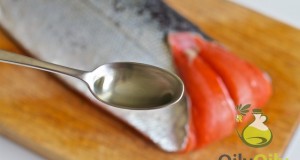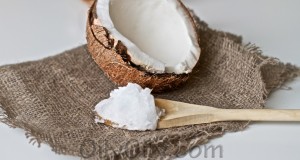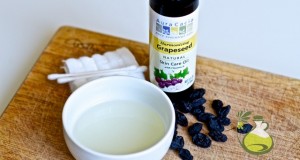
Photo credit: wikimedia
Corn oil nutrition profile is necessary to know as corn oil is one of the most popular today. It is widely used for cooking and commercial food preparation. Corn oil is bleached and deodorized. What do we get from corn oil when we eat it?
Physical features of corn oil
Crude corn oil is dark red. As it is bleached and cleared from free fatty acids it becomes light brown. The taste of corn oil is neutral with some flavor of roasted corn. If heated the oil becomes sweet and adds a sweetish taste to the dish. The density of corn oil is 0.92 g/ml.
Corn oil has a high smoke point. It equals to 450°F, so the oil is applied for all types of low and high-heat cooking. You may use corn oil for deep frying without any danger for your health due to the risk of trans fats and free radicals.
IMPORTANT! Can You Substitute Corn Oil for Vegetable Oil?
Corn oil fatty acid profile
Corn oil is rich in energy. There are 884 calories in 100 g of the oil. All calories in it come from fat. Corn oil is free from carbohydrates, protein and sodium. However, the fats in the oil are healthy. Corn oil is cholesterol-free. According to Nutritiondata corn oil fatty acid composition is as follows:
| Corn oil | |
| 100 g | |
| Calories | 884 kcal |
| MonounsaturatedOmega-9 fat (oleic acid) | 27.6 g |
| PolyunsaturatedOmega-6 fat (linoleic acid) | 53.5 g |
| PolyunsaturatedOmega-3 fat (alpha-linolenic acid) | 1.16 g |
| Saturated fat | 13 g |
Is corn oil healthy? The ratio of linoleic acid to alpha-linolenic acid is very high, which makes corn oil a not very healthy option among all cooking oils. Omega-6 fatty acids are essential for our health. We need them and get them only from our diet. But when we consume a large quantity of omega-6 fatty acids and a small amount of omega-3 fats it leads to the increase in inflammatory processes in the body. Some researchers admit that it can cause cancer, for example, breast cancer and prostate cancer. The deficiency in omega-3 fats is dangerous for the health that’s why in addition to corn oil it is recommended to consume omega-3 fats in the form of pills or from food products high in omega-3s, such as fish, shrimp or fish oil. Omega-3 fats have anti-inflammatory effect and counteract omega-6 fats. The balance of these fatty acids in our diet should be at least 4:1 as Wikipedia states.
SEE ALSO: Up-to-date Sunflower Oil Nutrition Data
Other corn oil nutrition facts
Corn oil is a rich source of tocopherols. It contains vitamin E, or Alpha-tocopherol, in the amount of 11.9 mg in one tablespoon. It also has vitamin K (0.3 mcg per tbsp). Vitamin E is a strong antioxidant protecting the cells from harmful damage and capable to combat free radicals. It helps maintain the integrity of cell mucus membranes. Both vitamins are involved in blood clotting regulation.
As corn oil is plant oil, it is high in phytosterols, containing 131 mg in 1 tbsp. Phytosterols control the absorption of cholesterol in the intestines thus lowering the level of bad cholesterol.
 Oilypedia.com – Benefits And Uses Of Supplemental and Essential Oils
Oilypedia.com – Benefits And Uses Of Supplemental and Essential Oils 


